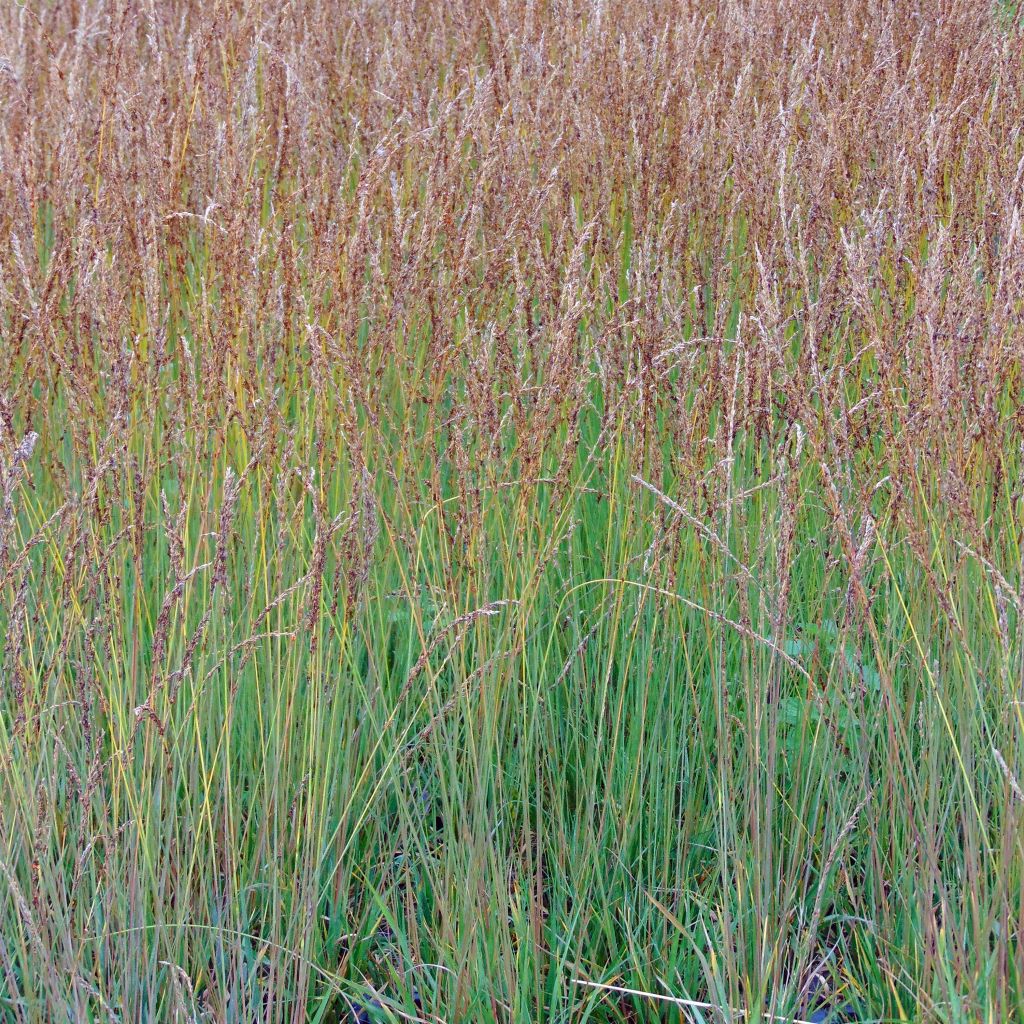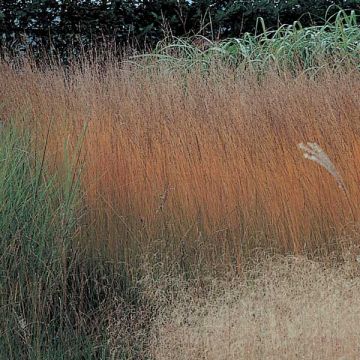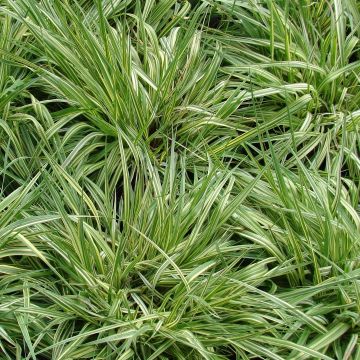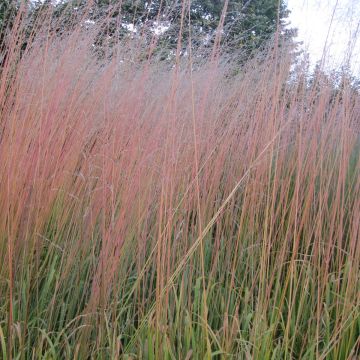

Molinia caerulea Moorhexe - Purple Moor-grass


Molinia caerulea Moorhexe - Purple Moor-grass
Molinia caerulea Moorhexe - Purple Moor-grass
Molinia caerulea Moorhexe
Purple Moor-grass, Moor Grass
Excellent responsiveness from Promesse de Fleurs, who delivered within 24 hours following a mishap due to Royal Mail. Young plants received in very good condition.
Monique, 17/08/2021
Special offer!
Receive a €20 voucher for any order over €90 (excluding delivery costs, credit notes, and plastic-free options)!
1- Add your favorite plants to your cart.
2- Once you have reached €90, confirm your order (you can even choose the delivery date!).
3- As soon as your order is shipped, you will receive an email containing your voucher code, valid for 3 months (90 days).
Your voucher is unique and can only be used once, for any order with a minimum value of €20, excluding delivery costs.
Can be combined with other current offers, non-divisible and non-refundable.
Home or relay delivery (depending on size and destination)
Schedule delivery date,
and select date in basket
This plant carries a 12 months recovery warranty
More information
We guarantee the quality of our plants for a full growing cycle, and will replace at our expense any plant that fails to recover under normal climatic and planting conditions.

Would this plant suit my garden?
Set up your Plantfit profile →
Description
The Molinia caerulea 'Moorhexe', also known as Blue Moor Grass or 'Moorhexe' Purple Moor Grass, is a grass native to acidic and windswept heathlands, combining charm and solidity. The plant forms a fairly low and upright column, with fine foliage, spectacular in autumn when the wind plays with its blonde and coppery hairs, flowering with clusters of almost black purple spikelets tightly packed against its culms. When planted in sunny locations, it adapts to dry or waterlogged soils, even clayey ones, and structures the flower beds in winter, with its frozen silhouette, from its swollen base to its dark flowering.
Native to Northern Europe, Southwest and North Asia, Siberia, Turkey, and the Caucasus, Molinia caerulea belongs to the Poaceae family. In France, it is found in woodlands, heathlands, and damp meadows. This grass has a thick, fibrous, and tenacious stump. It owes its species name to the blue reflections that characterize its foliage. 'Moorhexe' is a particularly interesting selection for its beautiful autumn colors and flowering. This perennial forms a slightly stiff but graceful clump, resembling a bundle of leaves that reaches 45 to 50 cm (18 to 20in) in height for the foliage, 90 cm (35in) in flowers, with a spread of 40 cm (16in). It bears thin, flat, light green leaves in summer, turning blonde and rusty in autumn, persisting in a darker shade in winter. In late summer, tall, sturdy stems appear above the foliage, carrying panicles of fluffy spikelets in a very dark purple, which cling to the stems and remain interesting in winter. At maturity, the stems are almost black, and the spikelets dry well before winter. Regrowth starts late in spring.
The 'Moorhexe' molinia is a very graphic grass, with a harmonious but distinct architecture. Its presence is strong, its charm subtle and wild. For a beautiful effect in a natural garden, plant it in masses, in a small hedge, in a contemporary or rural garden. This grass tolerates occasional drought well, allowing it to be included in rockeries, alongside cotton lavenders and wormwoods. It will also find its place near water sources, where it will contribute to stabilizing the banks, alongside other grasses, willowherbs, gunneras, or sedges.
The swollen base of the stems of this grass is used for pipe cleaning and toothpicks. In nature, molinias are hosts to ergot, a cryptogamic disease of cereals, including rye, which, when consumed by humans, causes serious neurological disorders due to the hallucinogenic alkaloids it contains. Among cereals, only maize and sorghum are not affected.
Report an error about the product description
Molinia caerulea Moorhexe - Purple Moor-grass in pictures






Flowering
Foliage
Plant habit
Botanical data
Molinia
caerulea
Moorhexe
Poaceae
Purple Moor-grass, Moor Grass
Cultivar or hybrid
Other Molinia
View all →Planting and care
Molinia caerulea 'Moorhexe' adapts to all types of soil, as long as they are not too chalky. It prefers moist soils in summer, but tolerates moderate periods of drought well, as well as waterlogged soils during the growing season. This makes it an easy grass to cultivate and succeed with. Plant it in a sunny position, or at most in partial shade, in regions with hot summers. Water abundantly at planting, which should be done outside of frost periods. Avoid heavy fertiliser applications. Remove damaged foliage during the growing season and prune the clump in late winter, just before the start of growth.
Planting period
Intended location
Care
-
, onOrder confirmed
Reply from on Promesse de fleurs
Similar products
Haven't found what you were looking for?
Hardiness is the lowest winter temperature a plant can endure without suffering serious damage or even dying. However, hardiness is affected by location (a sheltered area, such as a patio), protection (winter cover) and soil type (hardiness is improved by well-drained soil).

Photo Sharing Terms & Conditions
In order to encourage gardeners to interact and share their experiences, Promesse de fleurs offers various media enabling content to be uploaded onto its Site - in particular via the ‘Photo sharing’ module.
The User agrees to refrain from:
- Posting any content that is illegal, prejudicial, insulting, racist, inciteful to hatred, revisionist, contrary to public decency, that infringes on privacy or on the privacy rights of third parties, in particular the publicity rights of persons and goods, intellectual property rights, or the right to privacy.
- Submitting content on behalf of a third party;
- Impersonate the identity of a third party and/or publish any personal information about a third party;
In general, the User undertakes to refrain from any unethical behaviour.
All Content (in particular text, comments, files, images, photos, videos, creative works, etc.), which may be subject to property or intellectual property rights, image or other private rights, shall remain the property of the User, subject to the limited rights granted by the terms of the licence granted by Promesse de fleurs as stated below. Users are at liberty to publish or not to publish such Content on the Site, notably via the ‘Photo Sharing’ facility, and accept that this Content shall be made public and freely accessible, notably on the Internet.
Users further acknowledge, undertake to have ,and guarantee that they hold all necessary rights and permissions to publish such material on the Site, in particular with regard to the legislation in force pertaining to any privacy, property, intellectual property, image, or contractual rights, or rights of any other nature. By publishing such Content on the Site, Users acknowledge accepting full liability as publishers of the Content within the meaning of the law, and grant Promesse de fleurs, free of charge, an inclusive, worldwide licence for the said Content for the entire duration of its publication, including all reproduction, representation, up/downloading, displaying, performing, transmission, and storage rights.
Users also grant permission for their name to be linked to the Content and accept that this link may not always be made available.
By engaging in posting material, Users consent to their Content becoming automatically accessible on the Internet, in particular on other sites and/or blogs and/or web pages of the Promesse de fleurs site, including in particular social pages and the Promesse de fleurs catalogue.
Users may secure the removal of entrusted content free of charge by issuing a simple request via our contact form.
The flowering period indicated on our website applies to countries and regions located in USDA zone 8 (France, the United Kingdom, Ireland, the Netherlands, etc.)
It will vary according to where you live:
- In zones 9 to 10 (Italy, Spain, Greece, etc.), flowering will occur about 2 to 4 weeks earlier.
- In zones 6 to 7 (Germany, Poland, Slovenia, and lower mountainous regions), flowering will be delayed by 2 to 3 weeks.
- In zone 5 (Central Europe, Scandinavia), blooming will be delayed by 3 to 5 weeks.
In temperate climates, pruning of spring-flowering shrubs (forsythia, spireas, etc.) should be done just after flowering.
Pruning of summer-flowering shrubs (Indian Lilac, Perovskia, etc.) can be done in winter or spring.
In cold regions as well as with frost-sensitive plants, avoid pruning too early when severe frosts may still occur.
The planting period indicated on our website applies to countries and regions located in USDA zone 8 (France, United Kingdom, Ireland, Netherlands).
It will vary according to where you live:
- In Mediterranean zones (Marseille, Madrid, Milan, etc.), autumn and winter are the best planting periods.
- In continental zones (Strasbourg, Munich, Vienna, etc.), delay planting by 2 to 3 weeks in spring and bring it forward by 2 to 4 weeks in autumn.
- In mountainous regions (the Alps, Pyrenees, Carpathians, etc.), it is best to plant in late spring (May-June) or late summer (August-September).
The harvesting period indicated on our website applies to countries and regions in USDA zone 8 (France, England, Ireland, the Netherlands).
In colder areas (Scandinavia, Poland, Austria...) fruit and vegetable harvests are likely to be delayed by 3-4 weeks.
In warmer areas (Italy, Spain, Greece, etc.), harvesting will probably take place earlier, depending on weather conditions.
The sowing periods indicated on our website apply to countries and regions within USDA Zone 8 (France, UK, Ireland, Netherlands).
In colder areas (Scandinavia, Poland, Austria...), delay any outdoor sowing by 3-4 weeks, or sow under glass.
In warmer climes (Italy, Spain, Greece, etc.), bring outdoor sowing forward by a few weeks.



















































